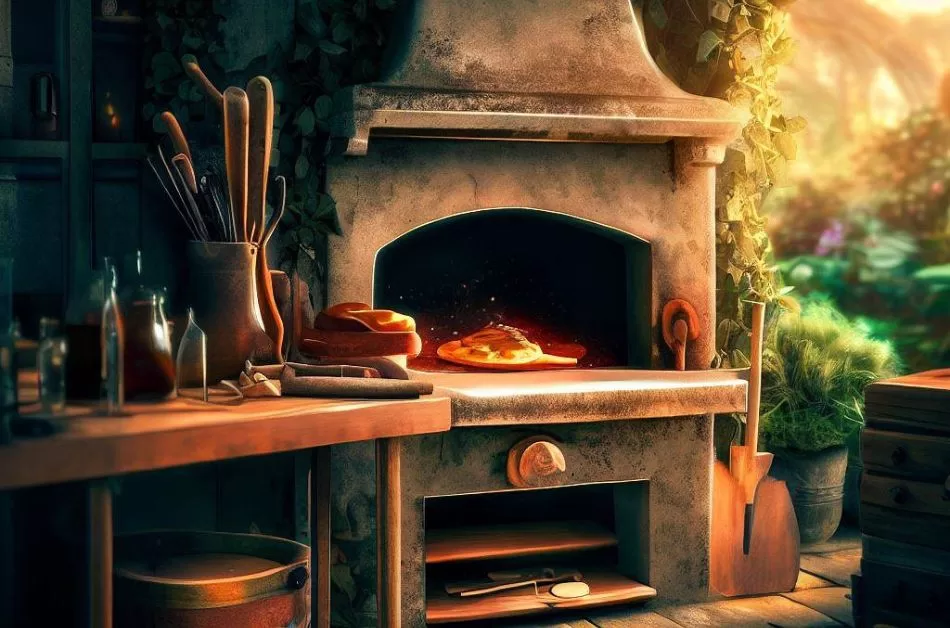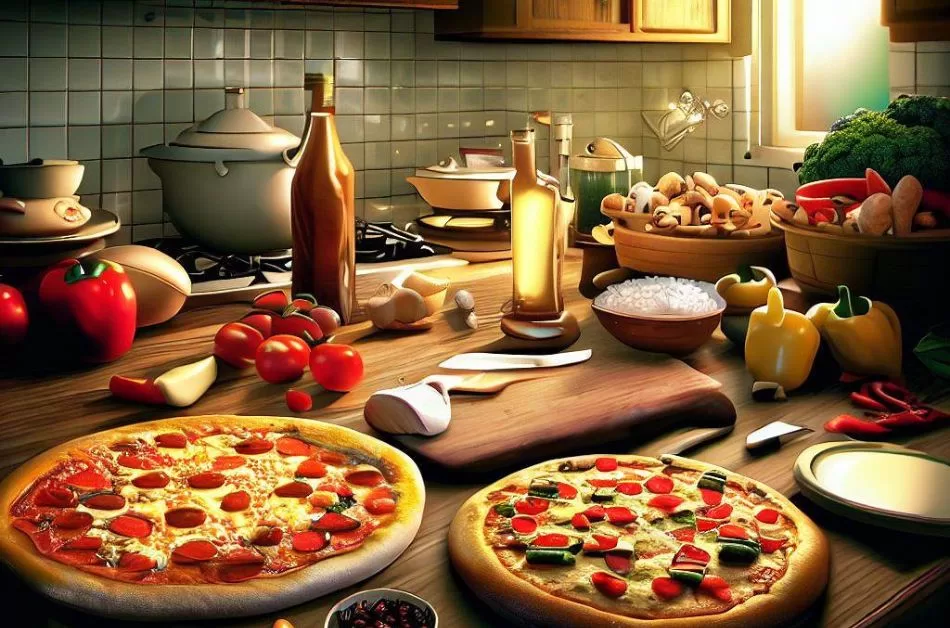Pizzas, with their irresistible allure, have transcended borders and cultures, becoming a cherished culinary phenomenon that unites people worldwide.
Originating in Italy, this delectable creation has journeyed across continents, tantalizing taste buds with its unique charm and flavor.
However, nestled within the pizza aficionado’s heart lies a persistent question: Why does pizza taste better at restaurants compared to homemade ones?
Join me as we embark on a flavorful exploration to uncover the hidden gems behind this culinary enigma.
Homemade vs. Restaurant Debate: Ah, the eternal debate that has divided pizza enthusiasts for ages! Is it the magic of a pizzeria’s ovens, the skill of professional chefs, or the quality of ingredients that casts the restaurant pizza in a league of its own?
Let’s dive into this delicious discourse and unearth the secrets that elevate the restaurant pizza experience beyond our home-cooked endeavors.
Table of Contents
ToggleThe Science Behind the Slice: A Look at Equipment

Specialized Ovens: The Heart of the Pizzeria
Picture this: A traditional brick oven, radiating warmth and emitting the tantalizing aroma of fresh pizza.
These iconic ovens, meticulously designed for even heat distribution, create an environment that fosters the perfect crust.
The scorching temperatures, often exceeding 800°F (427°C), work their magic by creating a delicate balance between a crispy exterior and a tender interior.
It’s no wonder the crust emerges with that coveted crunch, setting restaurant pizzas apart from their homemade counterparts.
Professional Pizza Tools: More than Just a Rolling Pin
Beyond the ovens, it’s the professional-grade tools that wield their influence.
Pizza stones, designed to mimic the brick oven’s intense heat, ensure an evenly baked crust that’s both thin and crispy.
Enter the pizza peel, a paddle-like implement that effortlessly slides pizzas in and out of the oven, preserving their structural integrity.
Specialized mixers with dough hooks guarantee optimal consistency, allowing chefs to craft dough with the perfect balance of extensibility and elasticity.
READ ALSO: Top commercial pizza ovens
Expertise in Every Bite: The Role of Professional Chefs
Training and Experience: The Unseen Ingredients
Behind every mouthwatering pizza is a skilled chef armed with generations of techniques and knowledge.
These culinary wizards rely on years of experience to wield dough like an artist’s brush, intuitively knowing when it’s ready for that perfect toss.
Toppings are meticulously placed to ensure each bite is an explosion of flavors.
This artistry can’t be replicated overnight; it’s the product of dedication, training, and a genuine passion for the craft.
Artisanal Techniques: Making Pizza an Art Form
Ever watched a chef twirl dough in the air?
That’s not just for show; it’s a technique that stretches the dough uniformly, creating a light and airy crust.
Balancing flavors is another skill.
Chefs understand the delicate interplay between ingredients – the umami of cheese complementing the tang of tomato sauce, the richness of meats playing off the freshness of vegetables.
It’s these nuances that elevate restaurant pizzas to gastronomic masterpieces.
Quality Over Quantity: The Ingredient Selection Process

The Art of Ingredient Sourcing
Behind the scenes, an intricate dance of ingredient sourcing unfolds.
Fresh vegetables and herbs are handpicked to ensure their peak flavors.
Specialty meats, curated for their uniqueness, are brought together to tantalize the palate.
These elements harmonize to create a symphony of taste, making each bite a euphoric experience.
Cheese: The Unsung Hero of a Perfect Pizza
Ah, the cheesy goodness that binds it all together!
The cheese at pizzerias isn’t just any cheese; it’s carefully chosen for its superior reliability and flavor profile.
Unlike store-bought varieties, pizzeria-grade cheese turns velvety and gooey in the oven’s intense heat, enveloping every inch of the crust in a layer of savory delight.
DON’T MISS: The latest review of the Chicago Brick Pizza Oven
The Allure of the Dining Experience
Ambiance and Atmosphere: Beyond Just Taste
Dining out isn’t just about the food; it’s a multisensory experience.
The aesthetics of a pizzeria, from its rustic decor to the flickering light of the oven, play a role in enhancing the taste perception.
The sizzle of pizzas as they emerge from the oven and the aromatic symphony of ingredients engage not just the taste buds but all our senses.
Service with a Smile: The Human Element
A restaurant experience is incomplete without the human touch. Interacting with knowledgeable staff who take pride in their craft adds a layer of joy to the meal.
Presentation, a fundamental aspect of fine dining, transforms a pizza into a work of art.
The care and craftsmanship involved in every slice are unmistakable, making the restaurant experience truly memorable.
Celebrating Homemade Pizzas: The Other Side of the Coin
Freedom to Innovate
While restaurants have their allure, there’s something liberating about creating your own pizza masterpiece.
Unconventional toppings, experimental sauces – the canvas is yours to explore. The satisfaction of crafting a unique pizza tailored to your taste is unparalleled.
Cost-Effective and Comforting
Let’s not forget the comfort of home. Baking pizzas in pajamas, avoiding restaurant markups – it’s a budget-friendly and cozy alternative.
Crafting pizzas that cater to your precise preferences is an unbeatable advantage.
Bridging the Gap: Elevating Your Homemade Pizza Game
As you embark on your pizza-making journey, consider these tips to bridge the gap between restaurant expertise and your kitchen:
- Dough Fermentation: Allow your dough to ferment for enhanced flavor development.
- Invest in a Pizza Stone: Elevate your crust game by investing in a pizza stone that mimics the brick oven’s heat.
- Sourcing Better Ingredients: Opt for fresher, higher-quality ingredients to elevate your pizza’s taste.
Final Thoughts about Why Pizza Tastes Better in Restaurants
In the end, the quest for the perfect pizza isn’t about choosing sides.
It’s about savoring the unique charms of both restaurant and homemade pizzas.
Whether you’re relishing the expertise of a professional chef or basking in the creative freedom of your kitchen, the joy of pizza lies in the experience itself.
So, as you savor your next slice, remember to appreciate the artistry behind restaurant pizzas while incorporating a touch of that magic into your homemade creations.
Embrace the lessons from both worlds and create your pizza masterpiece that reflects your personality.
The symphony of flavors and textures is what truly makes pizza a global sensation.
Ready to embark on your culinary journey?
Elevate your pizza game by exploring the Chicago Brick Pizza Oven
Get your pizza oven today and take the first step towards crafting pizzeria-level delights in the comfort of your home.
Sources:
- https://www.eatingwell.com/article/8039607/why-pizza-tastes-better-at-restaurants-according-to-chefs/
- https://www.mashed.com/1133664/why-pizza-always-tastes-better-at-a-restaurant/
- https://www.tastingtable.com/999519/why-pizza-is-almost-always-better-at-a-restaurant-than-at-home/
- https://source.colostate.edu/why-does-pizza-taste-so-good/
Frequently Asked Questions
The smoky flavor in restaurant pizzas is often attributed to the high temperatures of brick ovens, which impart a distinct char and smokiness to the crust and toppings.
Professional chefs achieve a perfect crust by using specialized ovens with scorching temperatures and pizza stones for even heat distribution, resulting in a thin, crispy exterior and a tender interior.
Yes, commercial pizza sauce is often prepared with specific ingredients and cooking methods to achieve a balanced and concentrated flavor, setting it apart from homemade sauce.
To replicate restaurant-quality cheese melt, opt for high-quality pizzeria-grade cheese known for its superior meltability. Additionally, using a pizza stone to create intense heat can contribute to achieving that perfect melt.
Homemade pizza may turn out softer due to variations in oven temperature, dough handling, and ingredient quality. Professional chefs and specialized equipment contribute to the characteristic crispiness of restaurant pizza.

Ethan Davis, a culinary arts graduate with a deep passion for pizza, is an esteemed author in the field. With a wealth of professional experience in diverse pizza restaurants, Ethan has honed his skills and expertise in the art of pizza making. His mission is to share his extensive knowledge with a wider audience, captivating them through engaging articles that showcase his profound understanding and unwavering enthusiasm for the subject. Through his writing, Ethan aims to inspire pizza enthusiasts worldwide, fostering a greater appreciation for the craft and encouraging others to explore the delicious world of pizza.

